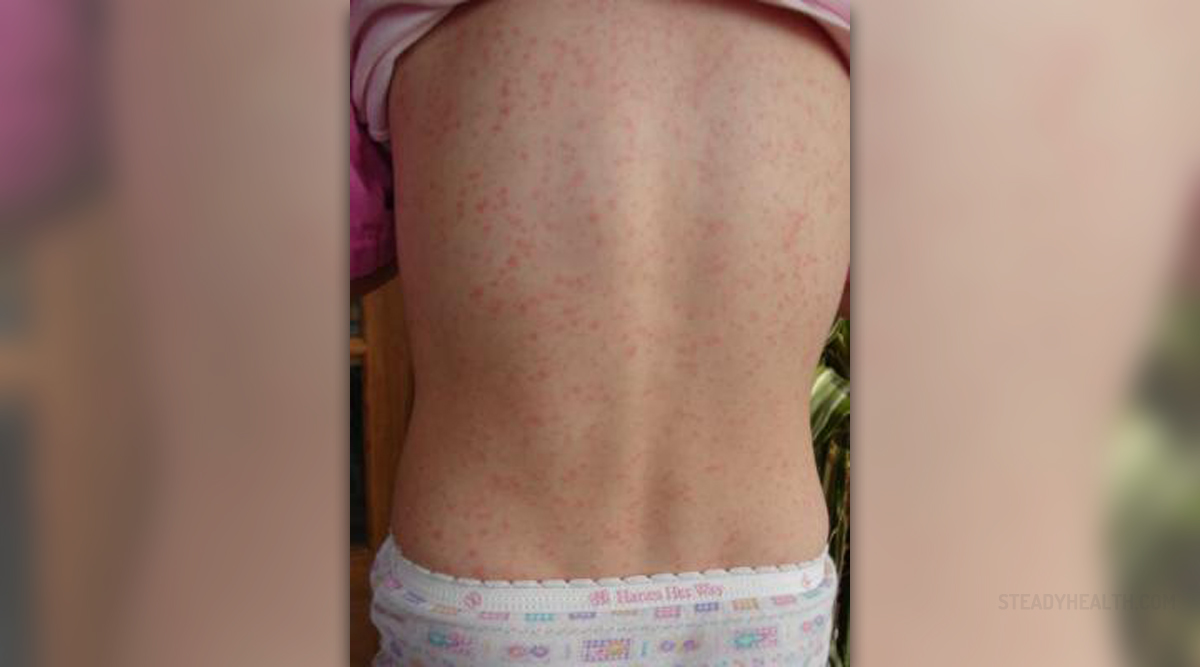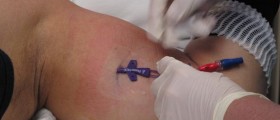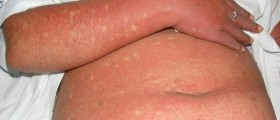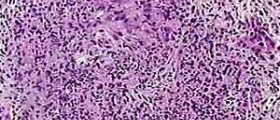
Scarlet fever is a disease caused by Streptococcus pyogenes, to be more precise by exotoxin of this bacterium.
The infection typically starts with sore throat and fever. There are also specific changes of the tongue and skin. The tongue is bright red and resembles strawberry. The rash in scarlet fever is red and rough-textured. This is the most striking sign of the disease and it first affects the face and neck and then spreads to the chest and back moving to the entire body. The rash develops 12 to 48 hours after the fever. What is typical for this rash is that it does not affect the area around the mouth. The rash in scarlet fever is worse in skin folds. It starts to fade away 3 to 4 days after the onset when the affected skin starts to peel.
Scarlet fever carries a risk of certain complications. They include septic complications associated with the spread of Streptococcus in the blood. There is also a chance of immune-mediated complications related to aberrant immune response. Septic complications do not occur so often and they include ear and sinus infection, pneumonia, empyema thoracis, meningitis etc. Immune complications related to scarlet fever are erythema nodosum, rheumatic fever and acute glomerulonephritis.
Diagnosing Scarlet Fever
A doctor sets the diagnosis of scarlet fever after physical examination of a patient. Diagnosing scarlet fever is not so difficult thanks to characteristic symptoms and signs of the disease. Further analysis may include blood test which shows marked leukocytosis with increased number of neutrophiles and normal or increased eosinophils. Sedimentation rate is high as well as C reactive protein. There is also elevation of antistreptolysin O titer which is typical for scarlet fever. The presence of Streptococcus may be confirmed by throat culture.
Treatment for Scarlet Fever
The treatment for scarlet fever basically depends on the age of patients, their general health, medical history and the severity of the very illness. It is essential to start treatment on time and this way prevent potential complications which may cause serious damage to many organs and organ systems.
The treatment for scarlet fever consists of antibiotics. Penicillin is very important drug and is highly effective in patients suffering from scarlet fever. Unfortunately, it cannot be administered in patients with penicillin allergy. Penicillin may be taken orally or be injected. In some cases patients are administered oral antihistamines to reduce itching caused by rash. The fever is controlled with acetaminophen and ibuprofen. Since there is a chance of infection to reoccur it is essential to finish the entire course of antibiotics.

















Your thoughts on this
Loading...